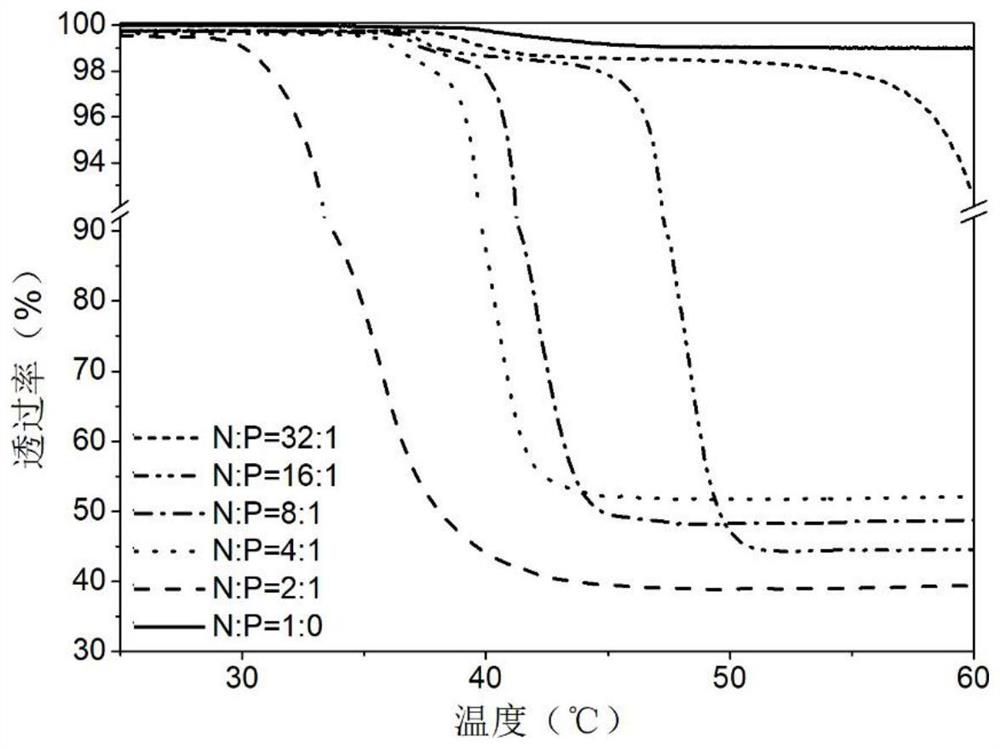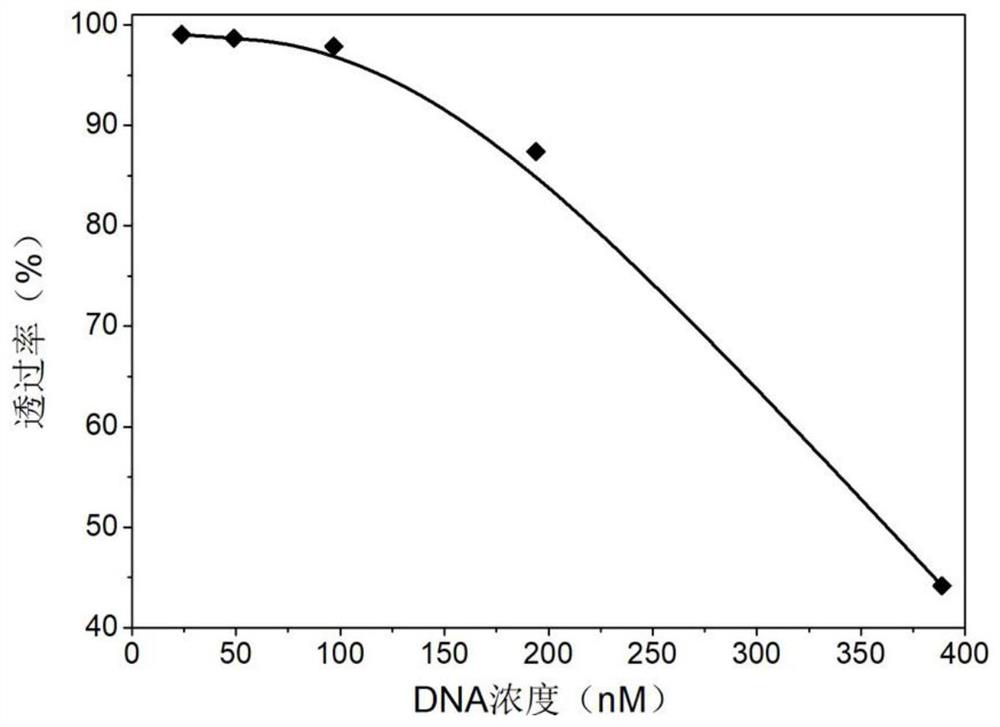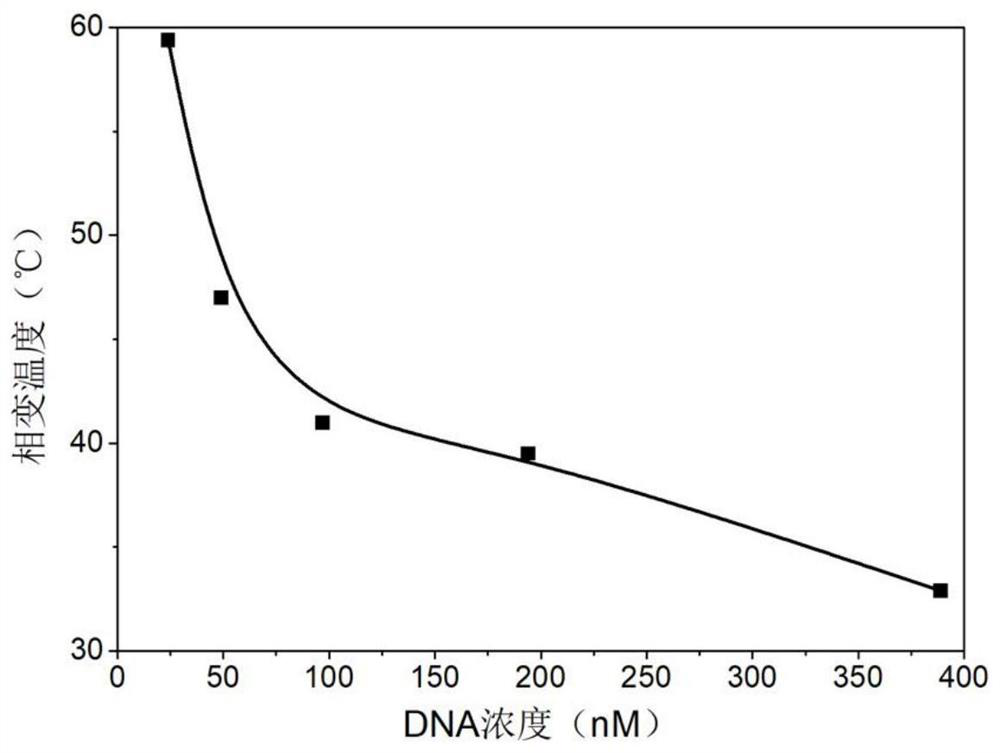Visual nucleic acid detection method for regulating polymer temperature-sensitive phase change based on nucleic acid
A detection method and polymer technology, which is applied in the field of biomedical detection, can solve the problems of complex detection process, time-consuming, and expensive equipment for nucleic acid detection, and achieve high detection efficiency, low detection cost, and high detection accuracy.
- Summary
- Abstract
- Description
- Claims
- Application Information
AI Technical Summary
Problems solved by technology
Method used
Image
Examples
Embodiment 1
[0028] In this embodiment, the test of sample N:P=32:1
[0029] A mixture of PG1AM (0.1mg / mL) with an amino concentration of 14μM and DNA (18bp) with a phosphate group concentration of 467nM was prepared with ultrapure water, and a sample of N:P=32:1 was obtained after thorough mixing.
[0030] Put the sample N:P=32:1 aqueous solution into a quartz cuvette, and record the turbidity curve at 25-60°C by changing the temperature (0.5°C / min) with a UV-visible spectrophotometer.
Embodiment 2
[0032]This embodiment is basically the same as Embodiment 1, especially in that:
[0033] In this embodiment, the test of sample N:P=2:1
[0034] Prepare a mixture of PG1AM (0.1 mg / mL) with an amino concentration of 14 μM and DNA (18 bp) with a phosphate group concentration of 7 μM with ultrapure water, and mix thoroughly to obtain a sample with N:P=2:1.
[0035] Put the sample N:P=2:1 aqueous solution into a quartz cuvette, and record the turbidity curve at 25-60°C by changing the temperature (0.5°C / min) with a UV-visible spectrophotometer.
Embodiment 3
[0037] This embodiment is basically the same as the previous embodiment, and the special features are:
[0038] In this example, the temperature-sensitive phase transition of the nucleic acid amplification system
[0039] The DNA was first amplified by RCA, and a PG1AM sample with a concentration of 0.1 mg / mL was prepared with ultrapure water. Among them, sample 1 is PG1AM control group, sample 2 is PG1AM and DNA amplified by RCA, and sample 3 is PG1AM and DNA not amplified by RCA.
[0040] Put the sample aqueous solution into a glass bottle, place it in a constant temperature water bath, and take pictures by changing the temperature of the system to record the relevant temperature-sensitive phase transition phenomenon.
[0041] The above-mentioned embodiments are based on a new nucleic acid visual detection method based on nucleic acid-regulated temperature-sensitive phase transition of polymers. After the nucleic acid is combined with a specific polymer, the overall soluti...
PUM
 Login to View More
Login to View More Abstract
Description
Claims
Application Information
 Login to View More
Login to View More - R&D
- Intellectual Property
- Life Sciences
- Materials
- Tech Scout
- Unparalleled Data Quality
- Higher Quality Content
- 60% Fewer Hallucinations
Browse by: Latest US Patents, China's latest patents, Technical Efficacy Thesaurus, Application Domain, Technology Topic, Popular Technical Reports.
© 2025 PatSnap. All rights reserved.Legal|Privacy policy|Modern Slavery Act Transparency Statement|Sitemap|About US| Contact US: help@patsnap.com



